Potrebujeme váš súhlas na využitie jednotlivých dát, aby sa vám okrem iného mohli ukazovať informácie týkajúce sa vašich záujmov. Súhlas udelíte kliknutím na tlačidlo „OK“.
ASTM D6351-10
Standard Test Method for Determination of Low Temperature Fluidity and Appearance of Hydraulic Fluids
Automaticky preložený názov:
Štandardná skúšobná metóda pre stanovenie tekutosť za nízkych teplôt a vzhľad hydraulických kvapalín
NORMA vydaná dňa 1.8.2010
Informácie o norme:
Označenie normy: ASTM D6351-10
Poznámka: NEPLATNÁ
Dátum vydania normy: 1.8.2010
Kód tovaru: NS-34786
Počet strán: 2
Približná hmotnosť: 6 g (0.01 libier)
Krajina: Americká technická norma
Kategória: Technické normy ASTM
Kategórie - podobné normy:
Anotácia textu normy ASTM D6351-10 :
Keywords:
hydraulic fluid, low temperature appearance, low temperature fluidity, vegetable oil, Appearance of materials, Fluidity, Hydraulic fluids/oils, Low-temperature testing--petroleum products/applications, ICS Number Code 75.120 (Hydraulic fluids)
Doplňujúce informácie
| Significance and Use | ||||||||
|
The temperature at which a lubricant remains fluid and homogeneous after seven days is an index of its ability to withstand prolonged exposure to cold temperature. With vegetable oils and some synthetic esters, it is necessary to do extended cold storage testing. Quick cool, short-term tests, such as Test Methods D97 and D2500, do not adequately predict the tendency to solidify over longer time spans at cold temperatures. This test method is not intended to indicate cold temperature pumpability performance. A separate assessment of viscometric performance should be made in order to assess cold flow properties, which are important in order to avoid system damage in cold temperature applications. Suitable guidelines for such testing and test temperatures for various viscosity grades can be found in Practice D6080. No specific temperature of measurement is given in this test method because fluids with different viscosity grades have different cold temperature performance expectations. For guidance on temperature selection relative to an intended low temperature viscosity grade or ISO VG, consult Practice D6080. As an example of using Practice D 6080D6080, a L22 viscosity grade would be evaluated at the lowest temperature for that grade, namely -22.9°C. Alternatively, a fluid can be evaluated at the lowest temperature expected for field service. |
||||||||
| 1. Scope | ||||||||
|
1.1 This test method covers the fluidity and appearance of hydraulic fluids after storage at low temperature. 1.2 The values stated in SI units are to be regarded as standard. No other units of measurement are included in this standard. 1.2.1 Exception—In 6.1.1, the material is designated in cSt as this is the common name used for this type of oil. 1.3 WARNINGMercury has been designated by many regulatory agencies as a hazardous material that can cause central nervous system, kidney and liver damage. Mercury, or its vapor, may be hazardous to health and corrosive to materials. Caution should be taken when handling mercury and mercury containing products. See the applicable product Material Safety Data Sheet (MSDS) for details and EPA’s websitehttp://www.epa.gov/mercury/faq.htmfor additional information. Users should be aware that selling mercury and/or mercury containing products into your state or country may be prohibited by law. 1.4 This standard does not purport to address all of the safety concerns, if any, associated with its use. It is the responsibility of the user of this standard to establish appropriate safety and health practices and determine the applicability of regulatory limitations prior to use. For specific warning statements, see 1.3 and Section 6. |
||||||||
| 2. Referenced Documents | ||||||||
|
Podobné normy:
Historická
1.5.2011
Historická
1.10.2010
Historická
1.5.2011
Historická
1.5.2014
Historická
1.5.2013
Historická
1.7.2014
Odporúčame:
EviZak - všetky zákony vrátane ich evidencie na jednom mieste
Poskytovanie aktuálnych informácií o legislatívnych predpisoch vyhlásených v Zbierke zákonov od roku 1945.
Aktualizácia 2x v mesiaci !
Chcete vedieť viac informácii ? Pozrite sa na túto stránku.


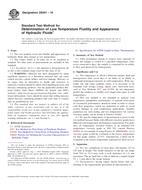
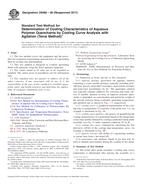 ASTM D6482-06(2011)..
ASTM D6482-06(2011)..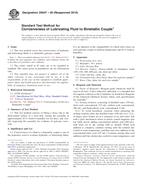 ASTM D6547-00(2010)..
ASTM D6547-00(2010)..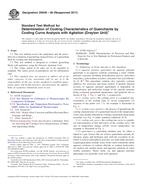 ASTM D6549-06(2011)..
ASTM D6549-06(2011)..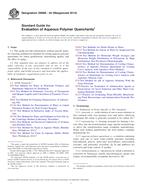 ASTM D6666-04(2014)..
ASTM D6666-04(2014)..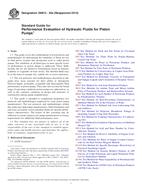 ASTM D6813-02a(2013)..
ASTM D6813-02a(2013)..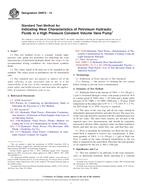 ASTM D6973-14
ASTM D6973-14
 Cookies
Cookies
